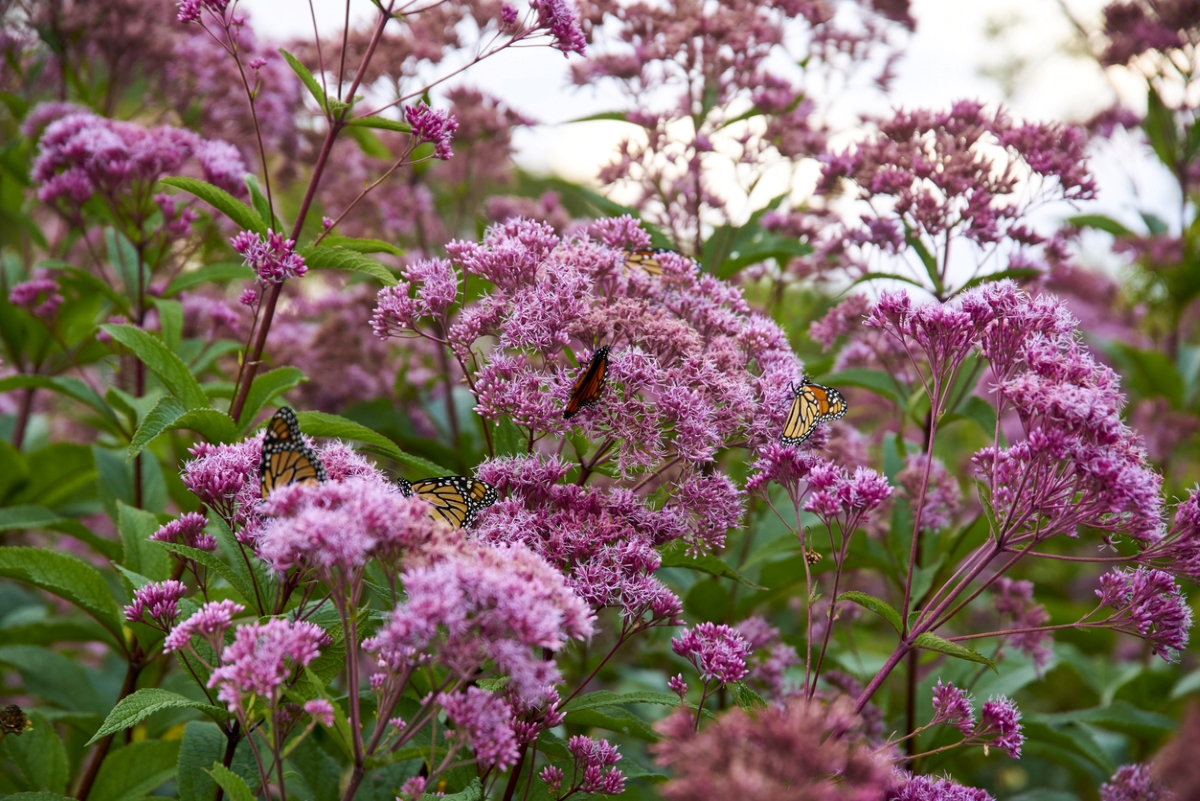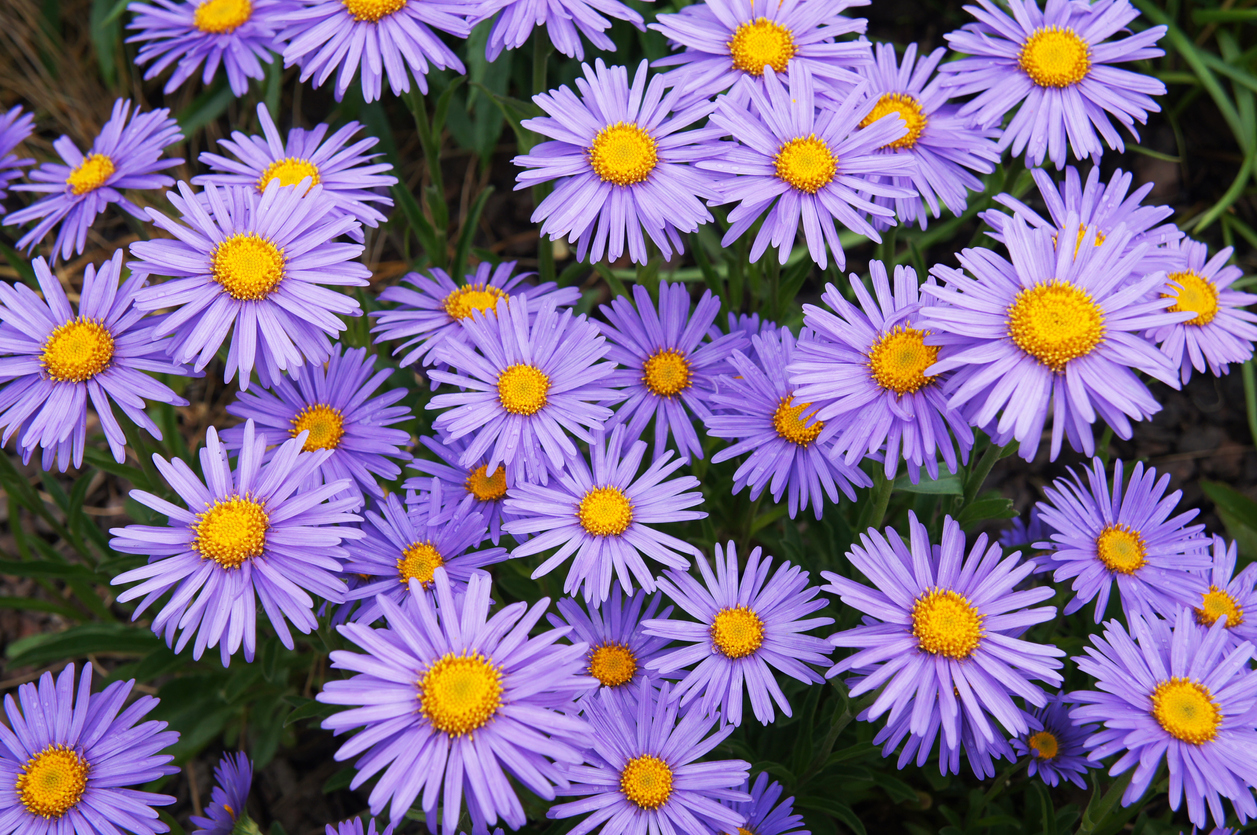We may earn revenue from the products available on this page and participate in affiliate programs. Learn More ›
Although some annual flowers, such as cosmos, dahlias, and zinnias, will bloom until late autumn if the weather remains warm, others curl up and die at the first sign of frost. To keep your garden interesting and colorful through the end of the year, you want at least a few fall flowers that can tolerate freezing temperatures and come back for more.
The family of fall-friendly flowers includes hardy annuals as well as biennials and perennials. Keep in mind that 25 degrees Fahrenheit seems to be the point at which even the boldest bloomers may call it quits for the year. Until those truly cold days kick in, however, rest assured that your garden’s fall color needn’t come from the trees.
Chrysanthemum (Chrysanthemum x morifolium)

Photo: iStock
Although mums are among the most popular fall blooms for their wide range of heights and colors, those sold during autumn may not survive the winter if planted too late. For the best results, set out mums—most of which are hardy in USDA zones 5 through 9—in the spring, so they have the entire summer to get established. If that isn’t possible, plant them as early as possible in autumn, in very well drained soil.
Flowering Cabbage and Kale (Brassica oleracea)

Photo: DigiPub via Getty Images
Made up of foliage rather than flowers, the colorful rosettes of flowering cabbage and kale resemble foot-wide oversize blooms. Kale has the loosest leaves, with frilly, finely cut edges, while the more tightly wound flowering cabbage tends toward smooth picotee rims. Growing to 15 inches tall, both types reportedly will survive temperatures down to 5 degrees Fahrenheit, with their hues deepening after the first frosts.
Japanese Anemone (Anemone hupehensis and hybrida)

Photo: iStock
Japanese anemones grow to 4 feet high with 2- to 3-inch single, semi-double, or double blooms that run mostly to pinks or whites and typically bloom over a 2-month period from late summer into autumn. Hardy in USDA zones 4 through 8, these graceful “windflowers” are tougher than they look and can keep bobbing on the breezes for years.
Joe Pye Weed (Eupatorium spp.)

Photo: iStock
Derived from a plant that can reach 9 feet in its original version, Joe Pye weed is now available in cutie Pye dwarf cultivars more suited for the garden. These include the 4-foot Eupatorium dubium ‘Little Joe’ or his “little brother,” the 2-foot ‘Baby Joe’. Most produce heads of lavender flowers from late summer into autumn and can tolerate soggy sites.
Maximilian Sunflower (Helianthus maximiliani)

Photo: USFWS Midwest Region from United States, CC BY 2.0, via Wikimedia Commons
Hailing from the Great Plains, this sunflower maxes out at 10 feet tall and, like a lanky cowboy, may need to prop itself against a fence or other support. Perennial in USDA zones 4 through 9, it can produce its 2- to 5-inch yellow flowers from August through November, and their seeds are highly attractive to birds.
Monkshood (Aconitum carmichaelii and napellus)

Photo: Federica Grassi via Getty Images
With lobed leaves and stalks of hooded blue-violet blooms that resemble monks’ cowls or helmets, these two monkshood species grow from 3 to 4 feet, respectively, in USDA zones 3 through 7. Although most other types flower during summer, these late bloomers like to have the last word. Because they are highly toxic plants, though, such “hoods” can be bad news if you have young children or pets.
New England Aster and New York Aster (Aster novae angliae and Aster novi-belgii)

Photo: iStock
These two aster species are similar to each other in appearance and requirements, but the leaves of the New York type are smooth compared to the New England type’s hairy ones. Both hardy in USDA zones 5 through 10, they generally don’t surpass 5 feet in height, with finely cut petals in a variety of colors. Like mums, they can be cut or pinched back in spring for a denser bloom that will prevent lanky plants from becoming “dis-asters.”
Pansy (Viola x wittrockiana)

Photo: iStock
Hardy annuals that can be perennial in mild climates, pansies seldom grow taller than 10 inches, with winsome and whiskery 2- to 4-inch faces. They revel in the cold and can reportedly tolerate conditions down to 25 degrees Fahrenheit. Below that temperature their foliage may begin looking a bit peaked, though even then they may be capable of staging a comeback if the weather improves.
Pot Marigold (Calendula officinalis)

Photo: Jacky Parker Photography/Moment via Getty Images
Named for their ability to bloom on almost any date in the calendar in some climates, calendulas—aka pot marigolds—are hardy annuals but self-sow enough that they can seem perennial. Growing from 1 to 2 feet in height with 2 ½- to 4 ½-inch blooms, they actually prefer chilly weather. In fact, they often will sulk during the heat of summer, perking up in autumn to bloom quite happily until temperatures drop below 25 degrees Fahrenheit.
Sneezeweed (Helenium spp.)

Photo: iStock
Sneezeweed grows to 5 feet tall in USDA zones 3 through 8, with clusters of 2- to 3-inch blooms in warm autumn colors from summer into fall. Although the plants sound like a nightmare for allergy sufferers, the name actually derives from the fact that the powdered flowers and foliage were once added to snuff. And a plant that can produce its own bouquets in autumn is nothing to sneeze at.

Everything You Need for a Lush and Healthy Lawn
Keeping your grass green and your plants thriving doesn’t just take a green thumb—it starts with the right tools and supplies.

